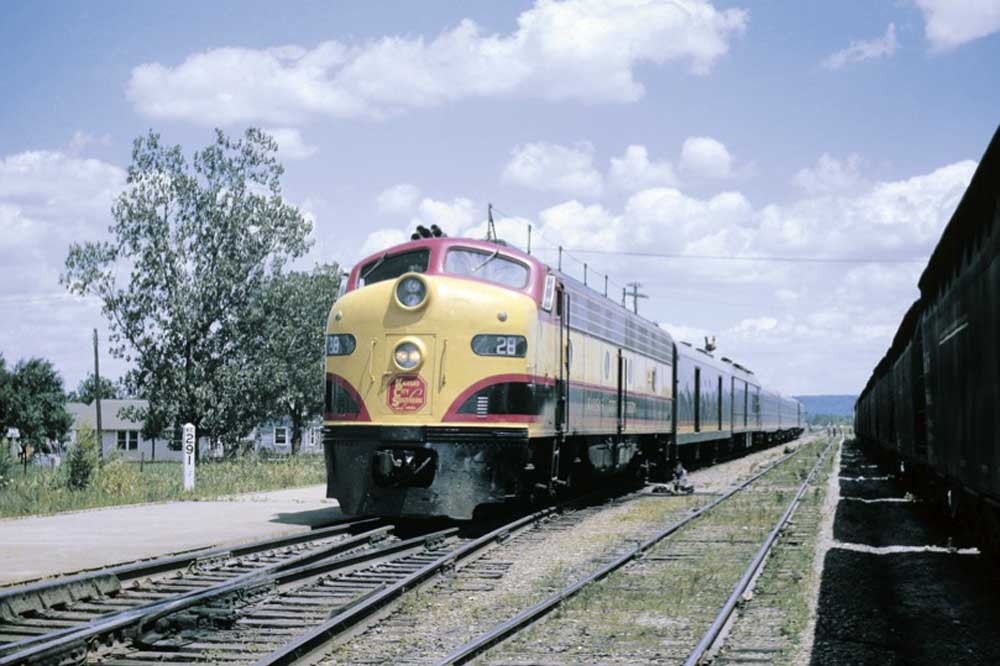
Before the whiteout Wearing the handsome yellow, black, and red Kansas City Southern passenger-diesel livery, E8 No. 28 is at Sallisaw, Okla., with the New Orleans-Kansas City Southern Belle in June 1962. KCS began using a version of this paint scheme, introduced with the Belle in 1940. The railroad later went to all-red and all-white […]
Read More…
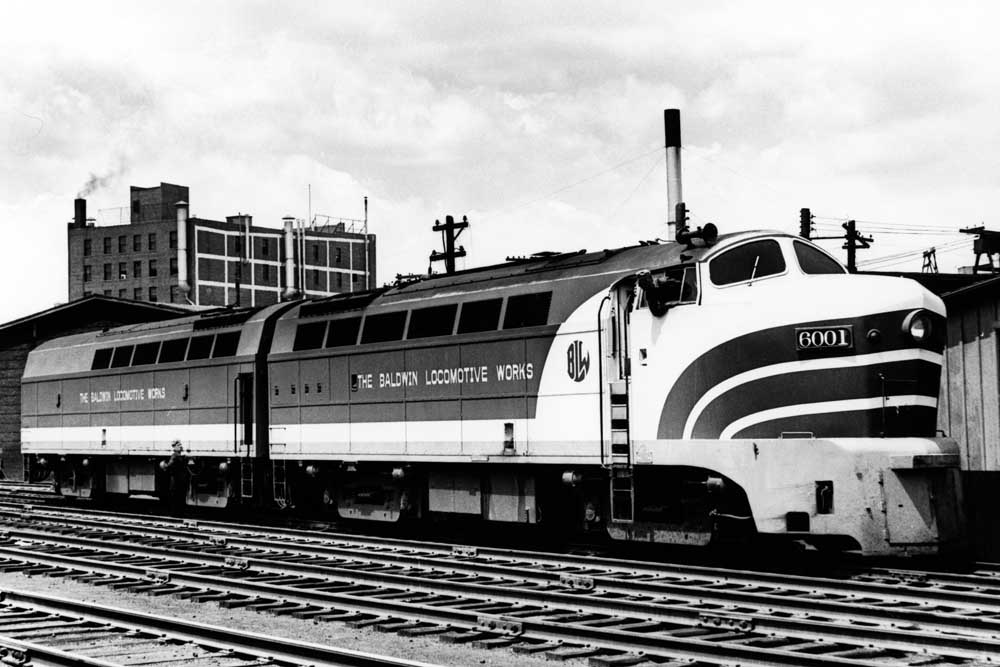
Baldwin’s best? Baldwin’s best-known diesels are its sharknose cab units, in particular the DR-4-4-15 and RF-16 freight units that became favorites among railfans. Here DR-4-4-15 demonstrator 6001 and a booster pause at Des Moines, Iowa, on the Wabash in 1950. Louis A. Marre collection […]
Read More…
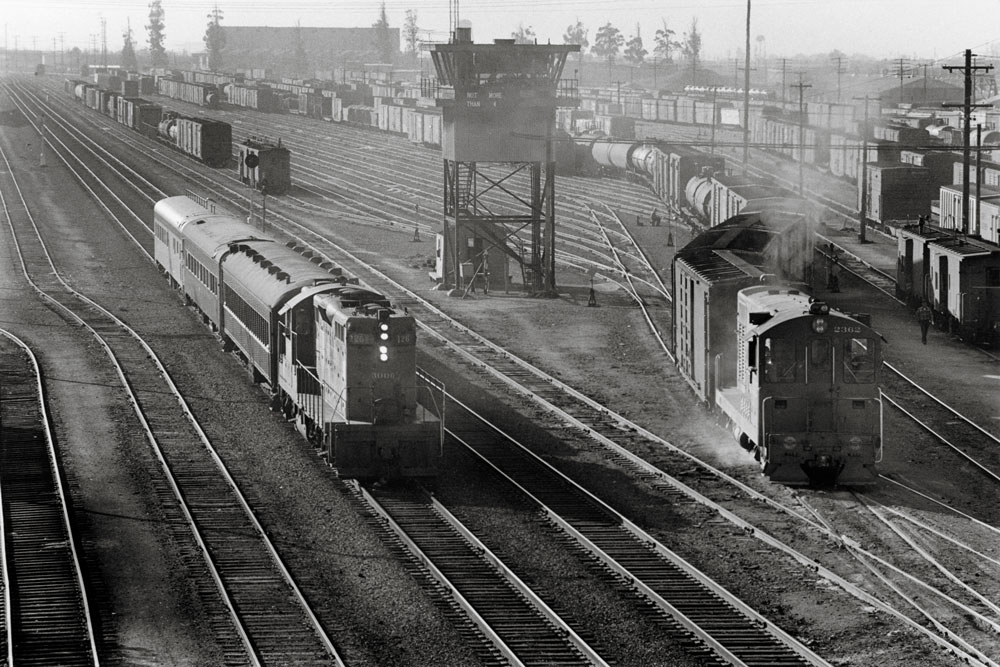
I was hired as a yard clerk for the Southern Pacific in San Jose, Calif., in April 1960. On my first day, I was ushered into the general yardmaster’s office and given a short talk on safety. The general yardmaster, an old head named Ralph Fanning, stood behind his desk and regarded me suspiciously. […]
Read More…

Canadian contrasts Canadian National U-4-a 6404’s rounded contours contrast with the angular lines of a nearby SW1200RS diesel switcher, although the 4-8-4’s traditional-style signal/marker lamps, boxy numberboards, and spoked engine-truck wheels detract from its streamlined appearance. Jim Shaughnessy photo […]
Read More…
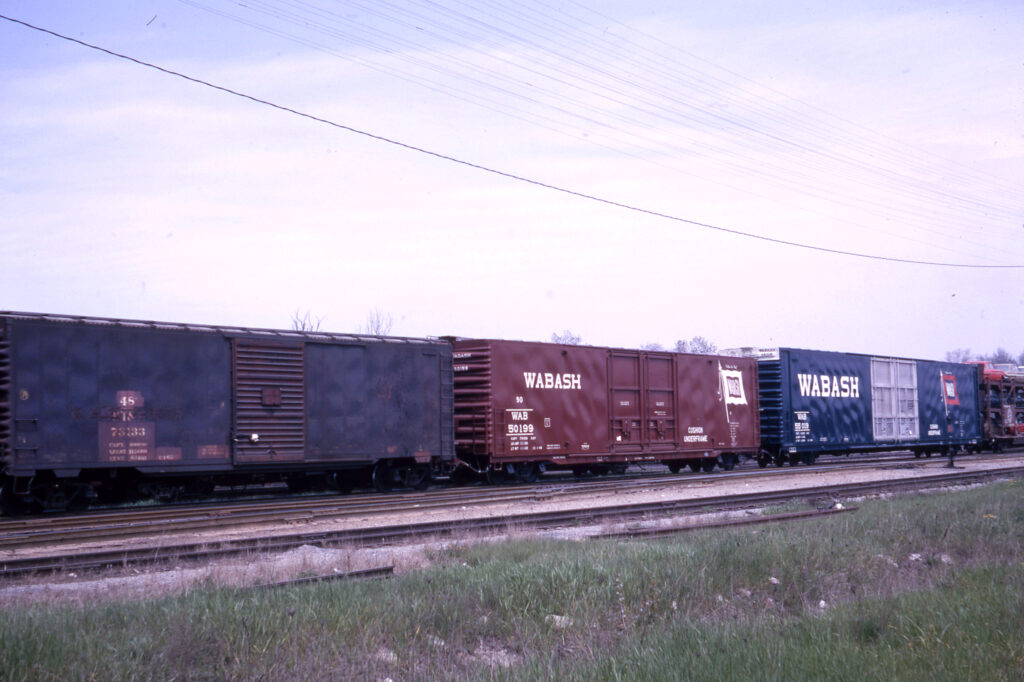
Freight car evolution Auto parts trains were a mixed bag in the mid-1960s. This Wabash train in May 1964 shows an old 50-foot parts car with only the code and car numbers visible, new 60- and 85-foot cars, and an open auto rack. J. David Ingles collection […]
Read More…

Iron mule An unseen “iron mule” between the rails propels a coal car, with a brakeman aboard, toward a dumper at Newport News, Va. The C&O, along with rivals Norfolk & Western and Virginian, moved millions of tons of coal to be transloaded to ships in the Hampton Roads region of Virginia. Chesapeake & Ohio […]
Read More…

Illinois steam survivor Wabash 2-6-0 576 creeps west across the Illinois River at Meredosia, Ill., in September 1954. The bridge famously limited the use of diesel locomotives on the railroad’s branch to Keokuk, making this operation a late era Midwest steam outpost. Philip R. Hastings photo […]
Read More…
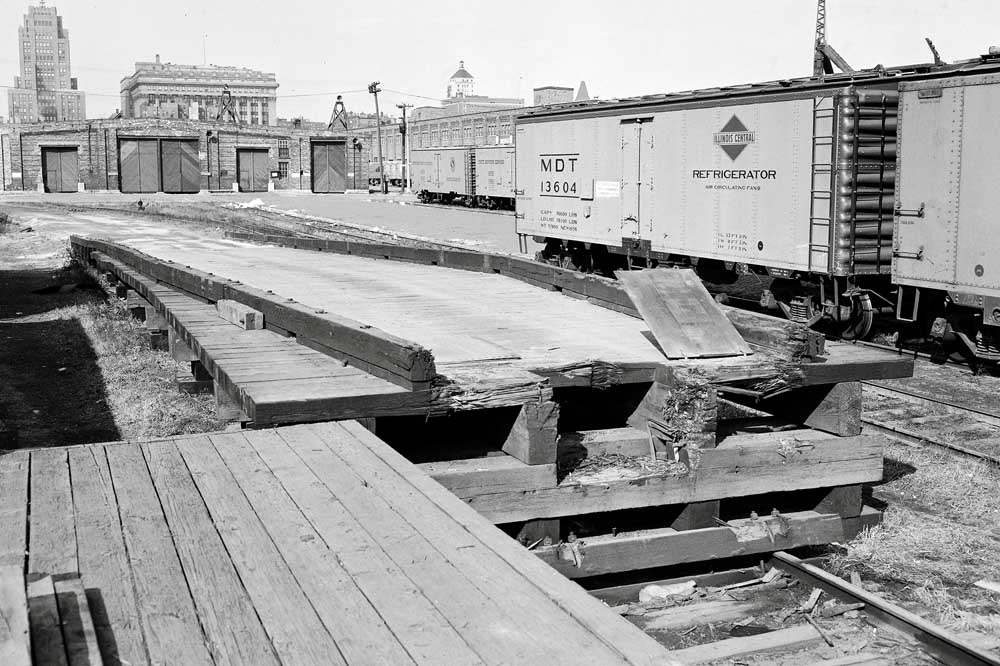
Intermodal engineering Wood planks were common for building piggyback ramps. Large planks formed rub rails (well-used judging by the scars) along the edges, with a notch for the flatcar coupler and a steel bridge plate on the right. Classic Trains magazine collection […]
Read More…
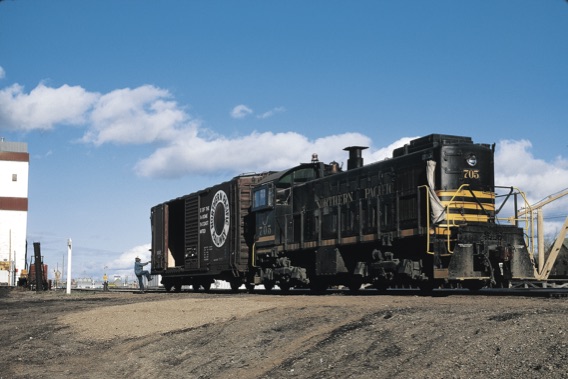
Midwest memories The sun shines down on Northern Pacific-painted S2 705 at Jamestown, N.Dak., on NP S2 705 in early 1970, just eight weeks after the creation of Burlington Northern. J. David Ingles photo […]
Read More…
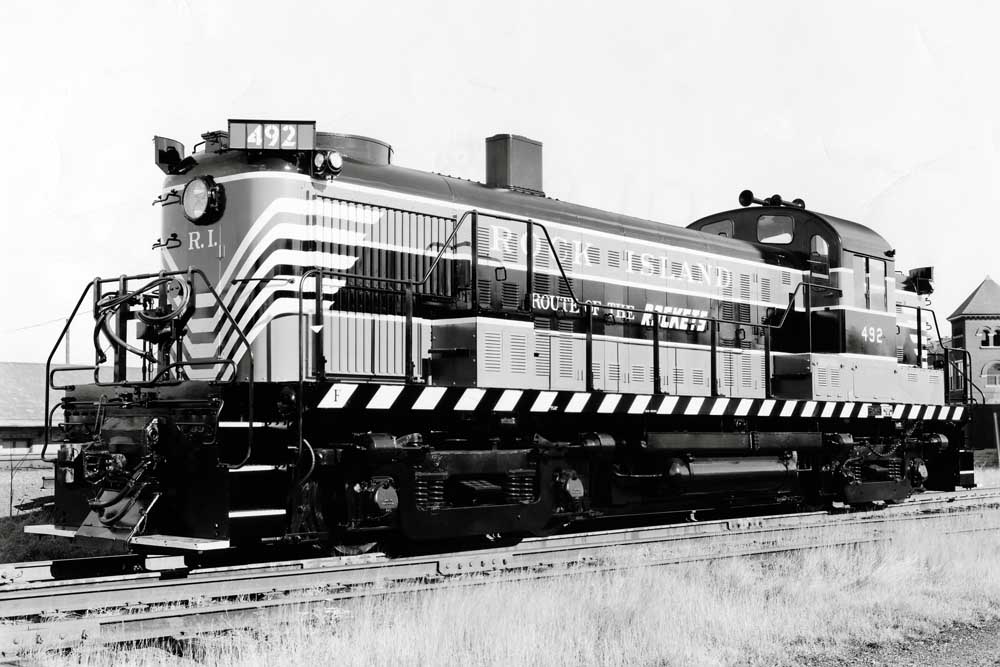
Route of the Rockets The 1,600-hp Alco RS3 was an all-time best-selling road switcher with more than 1,200 built from 1949 to 1956. Rock Island No. 492, built in 1951, operated in Chicago area commuter service. Rock Island photo […]
Read More…
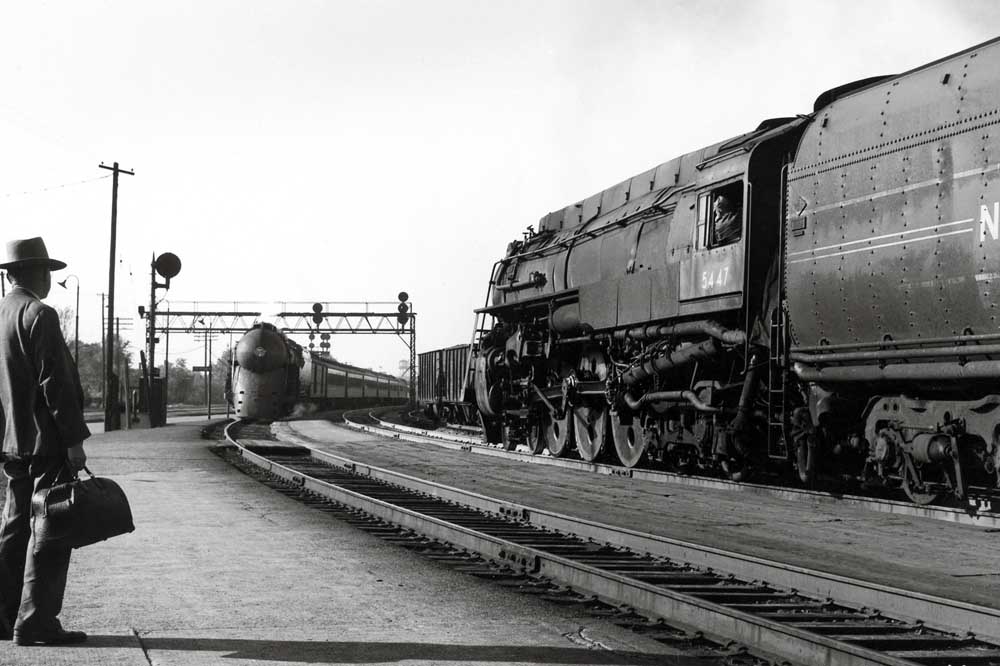
Hudsons meet New York Central 4-6-4 5447, its 1938 streamlining battered and partly removed, meets another streamlined Hudson at Chicago’s Englewood station in 1946. Paul Eilenberger photo, Harold Stirton collection […]
Read More…
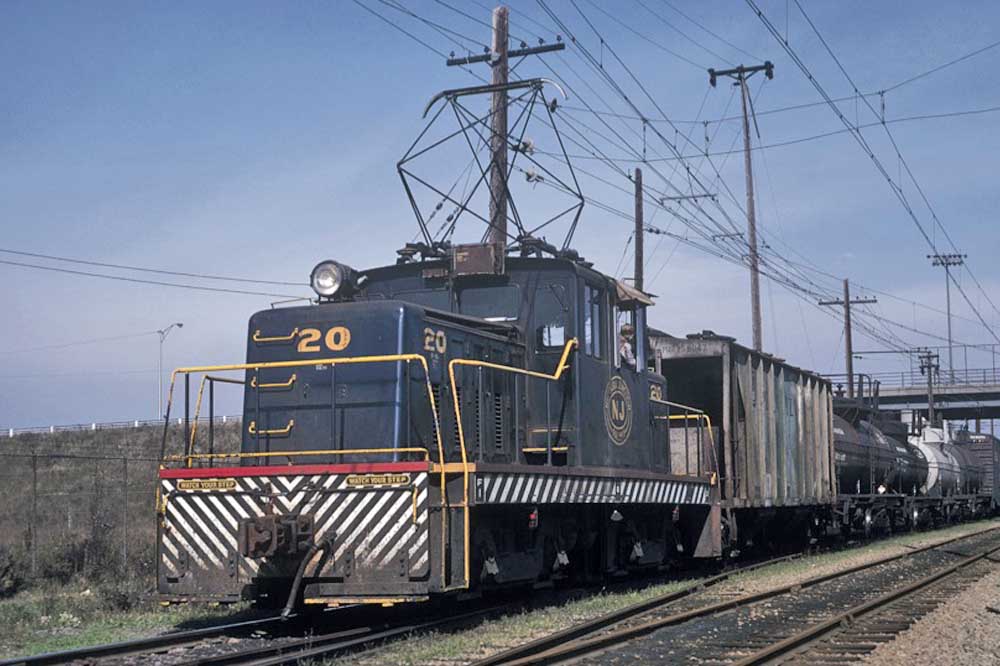
Niagara Junction Although it was built by the Niagara Falls Power Co. in the 1890’s, 11-mile switching road Niagara Junction used steam locomotives at first. Electrification, with 660-volt D.C. catenary and steeplecabs, came in 1913. New General Electric motors arrived in 1952 (that’s one at right, in October ’67), by which time the road was […]
Read More…












